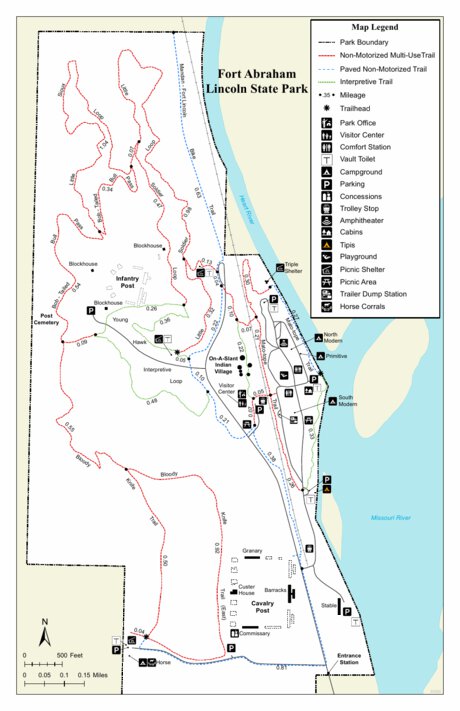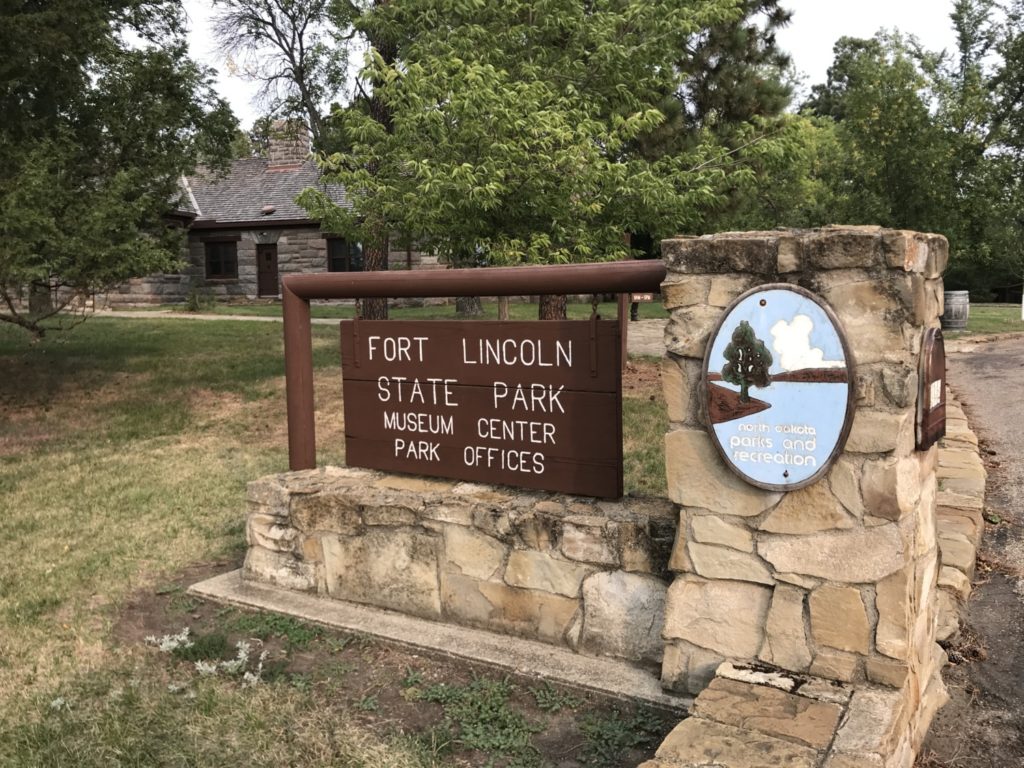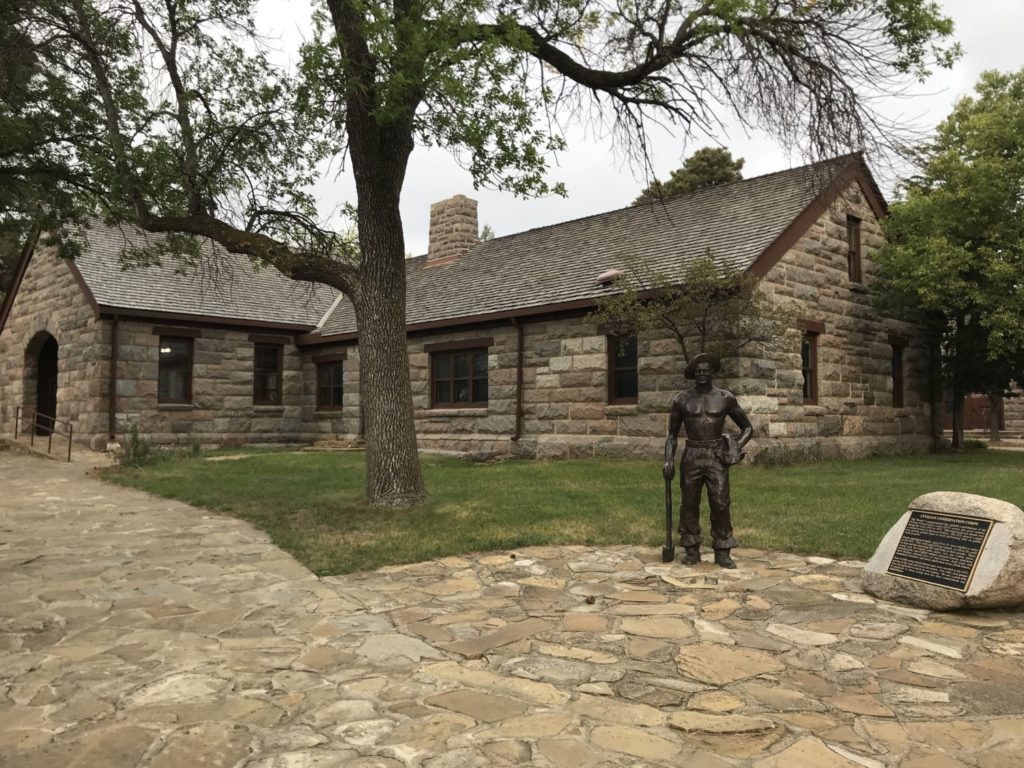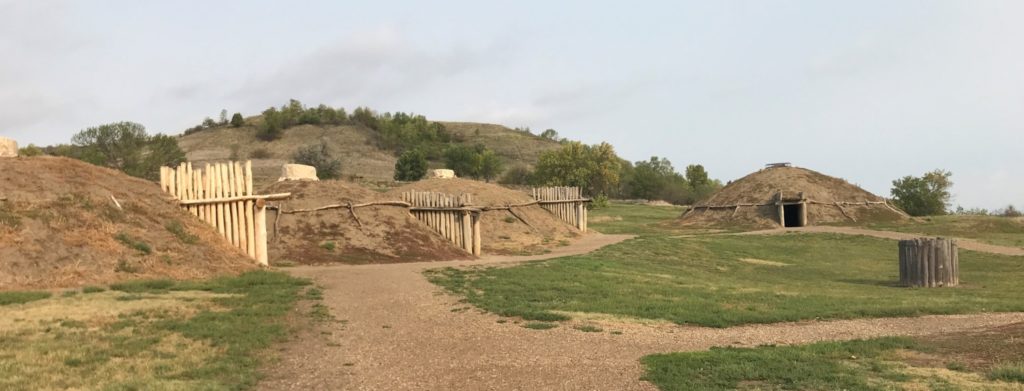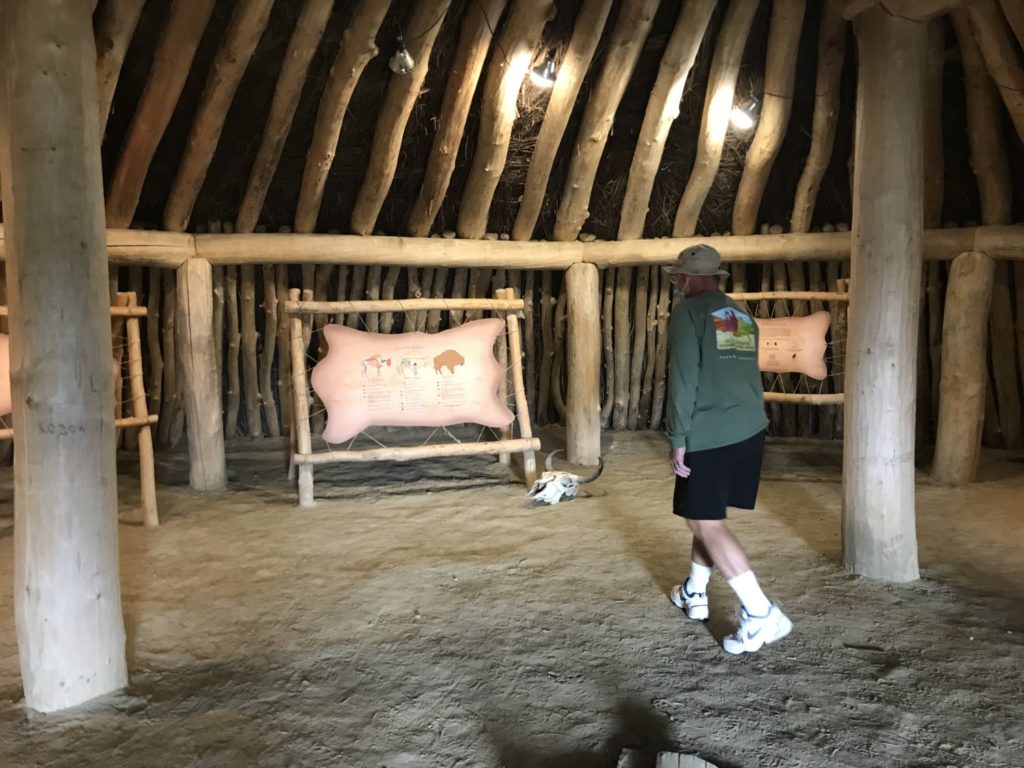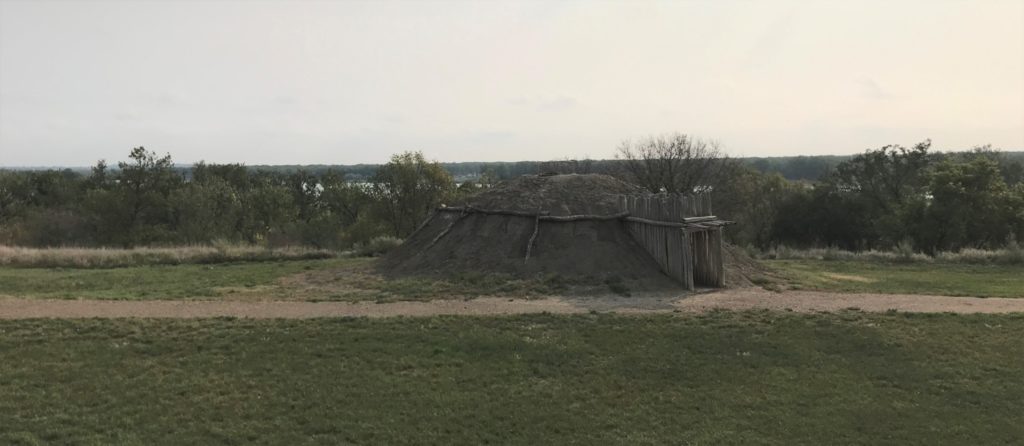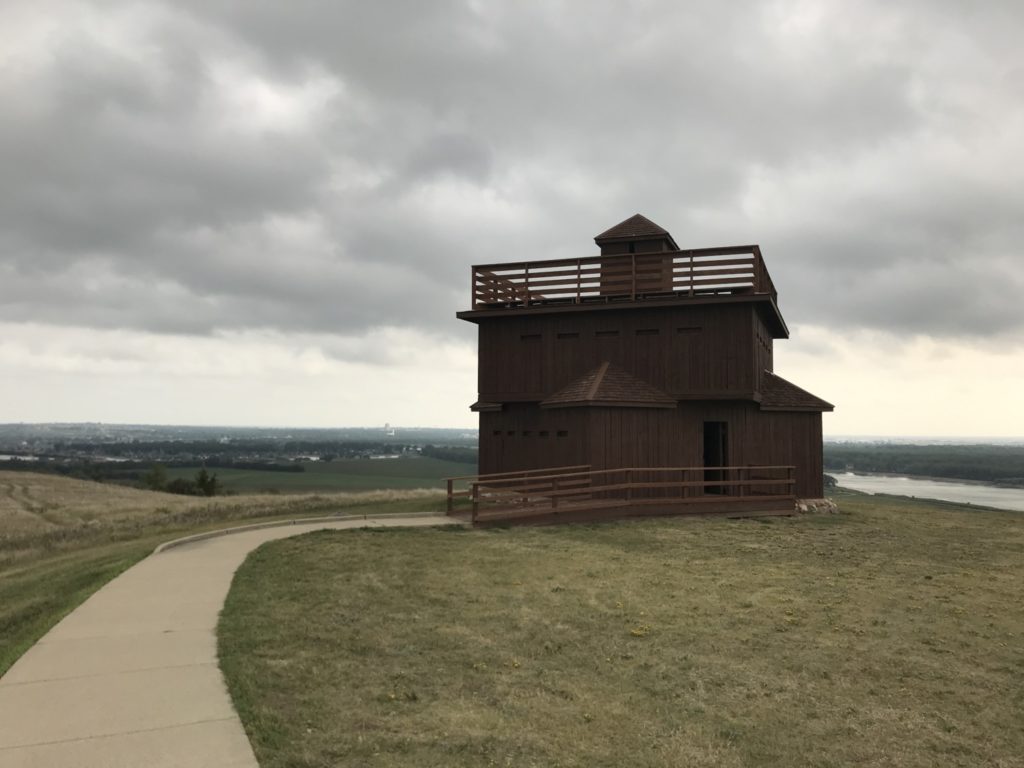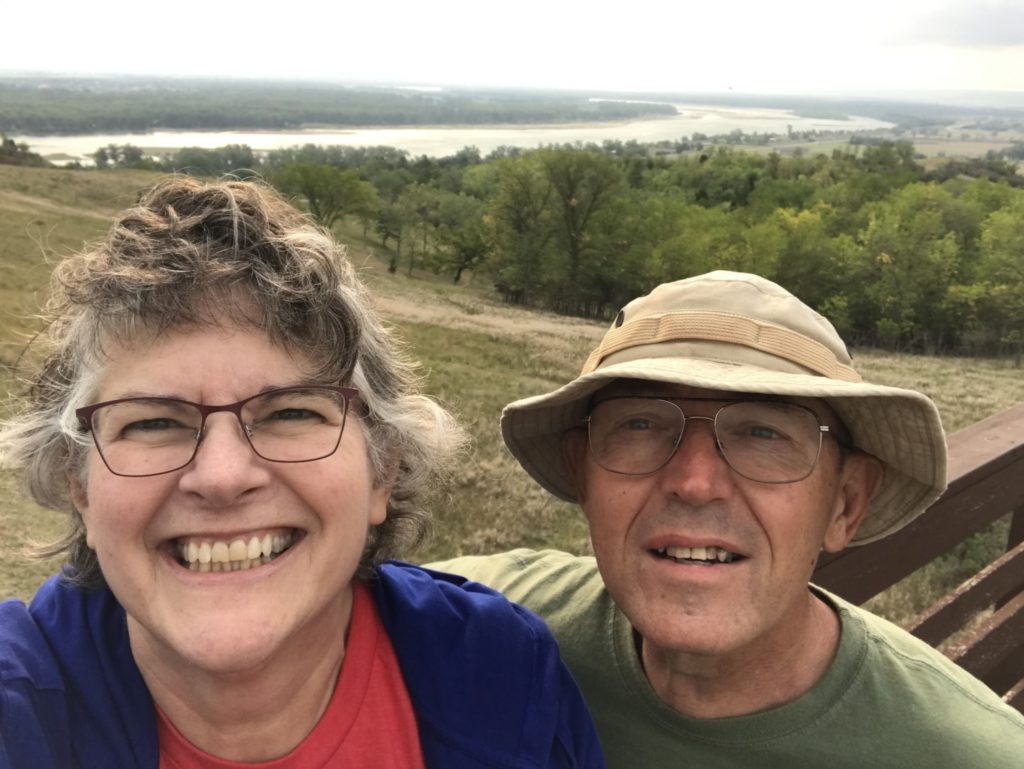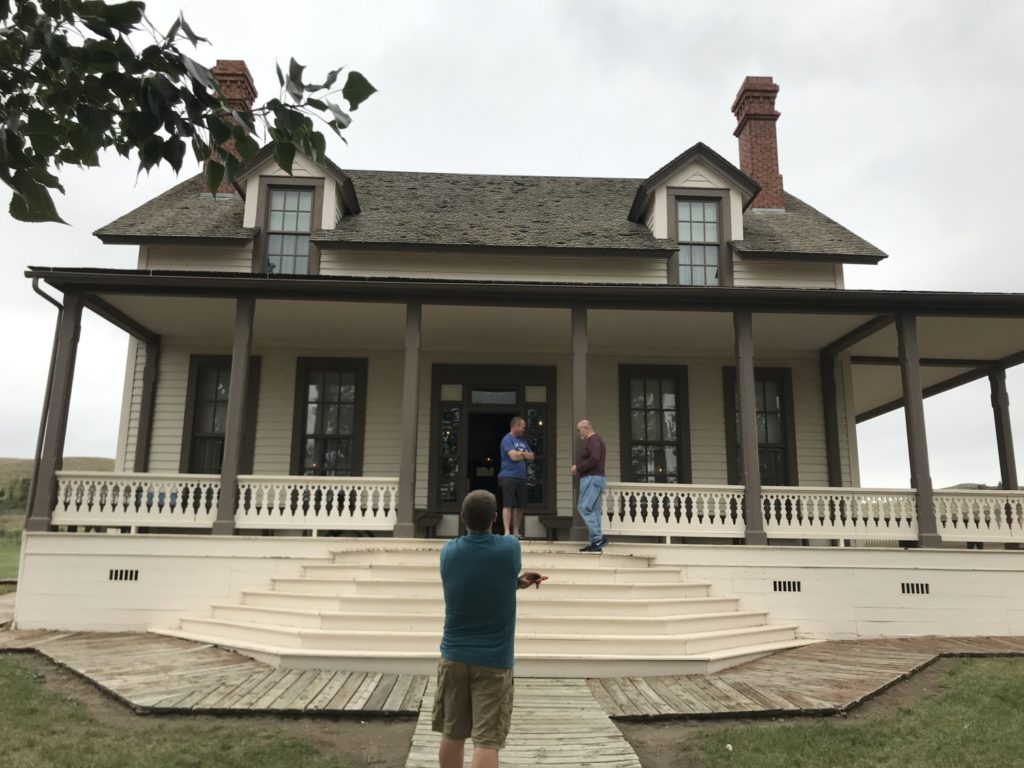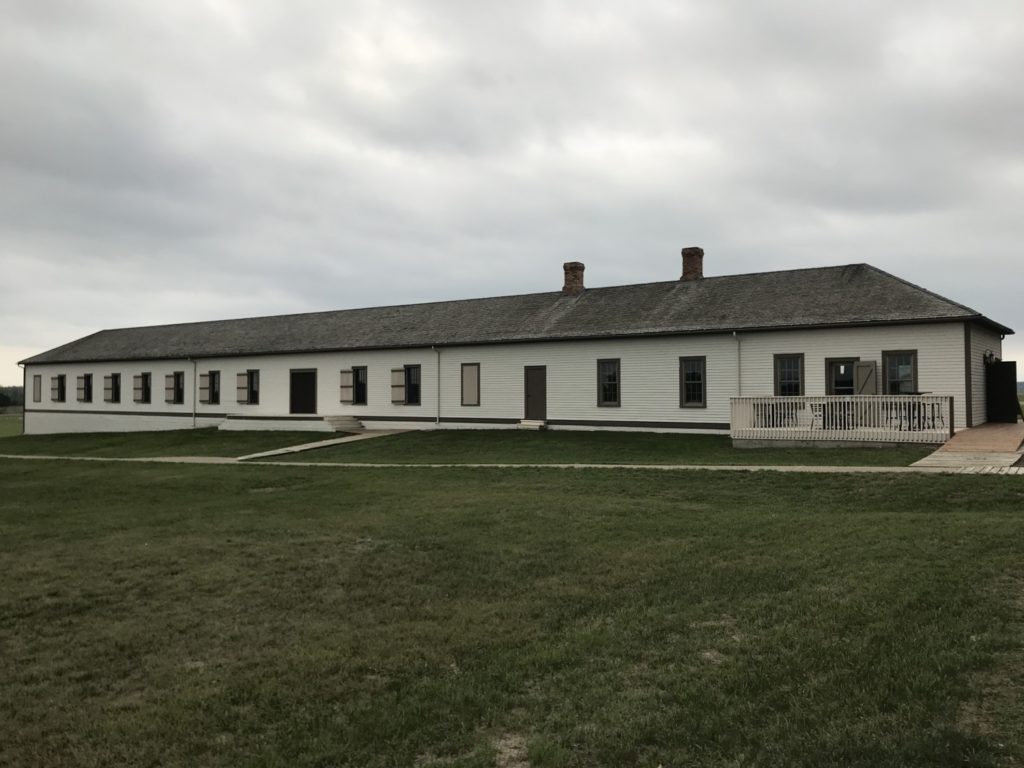The last place Tom and I visited when we went to Bismarck a few weeks ago was Fort Abraham Lincoln State Park. Fort Abraham Lincoln is the oldest state park in North Dakota and one of the best, as far as we are concerned.
Fort Abraham Lincoln State Park was established in 1907. Considering North Dakota didn’t become a state until 1889, that isn’t bad. Ohio’s first state park wasn’t established until 1894, which was 91 years after Ohio became a state. Can you guess what the first state park in Ohio was? I’ll put the answer at the end of the post.
Fort Abraham Lincoln State Park is located south of Mandan, North Dakota, just over the river from Bismarck. The park sits at the confluence of the Heart and Missouri Rivers. There is a large 100 site campground and you can rent a cabin or a Cheyenne tipi for a night or a week. There are 19 miles of hiking trails, bridle trails, and places along the rivers for fishing. But Tom and I weren’t there for camping or hiking – we were there for history.
Tom and I started our visit at the Visitors Center and Museum, which is in the middle of the park. The stone building is set in a beautiful area close to the river and surrounded by cottonwood trees. The building was constructed by the CCC during the 1930s and there is a CCC statue outside. We walked through the museum, which had a very good display on life in a Mandan village. We also watched the movie which was made in the early 1980’s but still did a good job of telling the story of the history of the area.
There are three distinctive historical areas to Fort Abraham Lincoln. The first is On-a-Slant Village which was a Mandan village built on a sloping plain toward the river. The village contained about 85 earthlodges with a population of about 1500. The Mandan were farmers who lived in permanent houses. They relied on a mixture of fishing, hunting, and agriculture. Nomadic tribes visited them to trade animal skins for agricultural products. A smallpox epidemic in 1781 killed most of the people who lived in the village and the survivors moved north. Eventually they joined the Hidatsa at Knife River.
Six reconstructed earthlodges stand in On-a-Slant village and four of them were open the day we visited. Scattered Corn, a Mandan woman who had lived in earthlodges as a child and learned how to build them, helped volunteers build the earthlodges at Fort Abraham Lincoln State Park. Tom and I were impressed by the differences in the size and uses of the earthlodges.
The second historical are of Fort Abraham Lincoln is Fort McKeen. Fort McKeen was built in 1872 as an infantry post. Soldiers were stationed there in preparation for the Northern Pacific Railroad building west of the Missouri River. Fort McKeen was cheaply built on the top of a hill. After the first miserable winter with wind and snow blowing through the walls, that location was abandoned, although blockhouses continued to be used for lookouts. Tom and I admired the views from the top of two of the blockhouses. We could easily see Bismarck and the Missouri River.
In 1873 Fort McKeen was expanded to include a cavalry post and its name was changed to Fort Abraham Lincoln. A more suitable fort was built in the protected valley. By 1874, Fort Abraham Lincoln housed three companies of the 6th and 17th Infantries and six companies of the 7th Cavalry, making the fort a nine-company command. With a total complement of about 650 men, the fort was among the largest and most important forts on the Northern Plains.
Lt. Colonel George Armstrong Custer was the first commander of the enlarged fort and served from 1873 until the Battle of the Little Big Horn in 1876. Upon completion of the railroad to Montana, Fort Abraham Lincoln had fulfilled its primary purpose. Consequently, the fort gradually declined in importance. It was decommissioned in 1891 it was decommissioned. In its heyday, the fort encompassed 78 separate buildings. All of the original buildings were dismantled by area settlers and the materials used in the construction of area homes and farms.
Today, due to efforts by the Fort Abraham Lincoln Foundation some of the buildings have been reconstructed. Three blockhouses stand on the hill overlooking the fort and village. The Commanding Officer’s Quarters (Custer’s house), Central Barracks, Granary, Commissary, and Stables now stand in the valley.
Tom and I walked around the grounds but we weren’t interested in paying for a tour of Custer’s House. Instead, we spent most of our time in the Commissary, which had an excellent bookstore and souvenir shop. We found a section on Fort Union books in the bookstore as well as lots of books on Custer and on the history of the area. The Commissary also sold t-shirts, sweatshirts, hats, snacks, and had a coffee bar.
We really enjoyed our visit to Fort Abraham Lincoln State Park. We agreed it would be an excellent place to camp when we come back to the area. Taking time to hike some of the trails would be a wonderful way to spend a day.
The first state park in Ohio was Buckeye Lake.

